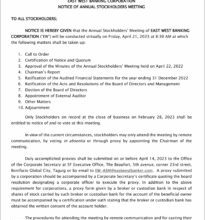PHL startup ecosystem needs clarity in ‘nat’l vision’ to grow — think tank

By Miguel Hanz L. Antivola
A COMPREHENSIVE and clearly outlined “national vision” for the startup ecosystem is needed to facilitate its growth, according to a Singapore-based think tank.
The Philippines, like many other countries, recognizes the potential of startups to drive innovation, economic growth, and job creation. To fully harness this potential, it is imperative to establish a roadmap that outlines the desired trajectory of the startup ecosystem, Peng T. Ong and Doris Magsaysay Ho, trustees of the Angsana Council, said in an interview with BusinessWorld.
“The most important thing for alignment is a clearly articulated vision — what it looks like for the Philippines five to ten years from now in terms of the sectors and industries we want to create and develop,” Mr. Ong said.
“You can systematically go through a high-level vision and ground it in the reality of what you need today for the next ten years,” he added. “I think it’s eminently possible, but someone needs to take the ball and run with it.”
The Philippines slipped two places, now ranking 59th out of 100 countries, in the 2023 edition of the Global Startup Ecosystem Index by the research center StartupBlink. With a score of 2.469, the Philippines is still the seventh-lowest scoring country among its peers in the Asia-Pacific region.
Mr. Ong noted that local investment funds are key to startups’ growth. “We could ramp that up. We could create policies that generate more funds to enable more startups.”
However, economic development initiatives need to be better aligned with processes treated like one would approach a business, according to Ms. Ho.
“Maybe we can put money in building new technology that we own,” she said on the proper allocation of government funds for a unified growth approach.
The country must come up with specific, grounded goals that maximize the abundant resources, according to Ms. Ho. “We actually do have a lot of the aspects. We just have to put it together.”
Mr. Ong cited the Philippines aiming to become the artificial intelligence (AI) hub in Asia as an example.
“Maybe every year in the next five to ten years, there is an AI-based services company that IPO’s (initial public offering) as a unicorn,” he said on a daring vision grounded in reality. “How many companies should start up today? How much fund? Do I have enough people?”
“Because we have a huge BPO (business process outsourcing) industry, a fund can be put together to bring in all kinds of startups looking for AI solutions,” Ms. Ho added.
“Just get clear with the results you want and how it is going to help the industry or replace parts of it,” Mr. Ong said.
Mr. Ong and Ms. Ho said that a structure for startups, in which the government provides the funds and the private sector takes action, can help ideas flourish, similar to the technology innovation incentives and schemes in Singapore.
“We have to copy those things that work because it’s better to have the government fund the decision made by someone who knows what they’re doing, who has skin in the game.”
While taking inspiration from other countries and how they manage their startup ecosystem, Mr. Ong and Ms. Ho mentioned the need to strengthen diaspora and academic participation.
“The diaspora is a grossly underestimated strength of the Philippines,” Mr. Ong said. “If you can inspire three or five percent of global Filipino top-notch executives to have the vision of what this country can be, get them back here, and help them, I think it’s a no brainer.”
“Give them the sense of mission to come back and bring the country forward,” Ms. Ho added. “If the Vietnamese and Indians can do it, why not the Filipinos?”
Ms. Ho said that the academe plays an important role as incubators of thought for anyone to come up with the next bright solution to the country’s problems and beyond.
“The problems in Indonesia, Thailand, and Vietnam are not that different from those in the Philippines,” Mr. Ong said.
“There’s a whole market that could be ready for companies, products from here going out towards not just Southeast Asia but the rest of the emerging markets, from Africa to South America.”




